

Ilocos Norte (Ilokano: Amianan nga Ilocos) is a province of the Philippines located in the Ilocos Region. Its capital is Laoag City, located in the northwest corner of Luzón Island, bordering Cagayan and Apayao to the east, and Abra to the southeast, and Ilocos Sur to the southwest. Ilocos Norte faces the West Philippine Sea to the west and the Luzon Strait to the north.
Ilocos Norte is noted for being the birthplace of the former President Ferdinand E. Marcos. Ilocos Norte is also known as a northern tourist destination, being the location of Fort Ilocandia, an upper class hotel and beach resort famous among expatriates, and Pagudpud.
Long before the arrival of the Spaniards, there already existed an extensive region (consisting of the present provinces of Ilocos Norte, Ilocos Sur, Abra and La Union)renowned for its gold mines. Merchants from Japan and China would often visit the area to trade gold with beads, ceramics and silk. The Austronesian inhabitants of the region called their place samtoy, from sao mi toy, which literally meant "our language here"
In 1571, when the Spanish conquistadors had Manila more or less under their control, they began looking for new sites to conquer. Miguel Lopez de Legazpi's grandson, Juan de Salcedo, volunteered to lead one of these expeditions. Together with 8 armed boats and 45 men, the 22-year-old voyager headed north. On June 13, 1572,Salcedo and his men landed in present-day Vigan and then proceeded towards Laoag, Currimao and Badoc. As they sailed along the coast, they were surprised to see numerous sheltered coves (looc) where the locals lived in harmony. As a result, they named the region Ylocos and its people Ylocanos.
As the Christianization of the region grew, so did the landscape of the area. Vast tracts of land were utilized for churches and bell towers in line with the Spanish mission of bajo las campanas. In the town plaza, it was not uncommon to see garrisons under the church bells. The colonization process was slowly being carried out.
The Spanish colonization of the region, however, was never completely successful. Owing to the abusive practices of many Augustinian friars, a number of Ilocanos revolted. Noteworthy of these were the Dingras uprising (1589) and Pedro Almasan revolt (San Nicolas, 1660). In 1762, Diego Silang led a series of battles aimed at freeing the Ilocano. When he died from his compatriot's bullet, his widow Gabriela continued his cause. However, she too was captured and hanged.
In 1807, the sugar cane (basi) brewers of Piddig rose up in arms to protest the government's monopoly of the wine industry. In 1898, the church excommunicated Gregorio Aglipay for refusing to cut off ties with the revolutionary forces of Gen. Emilio Aguinaldo. Unperturbed, he established the Iglesia Filipina Independiente. Aglipay’s movement.
In an effort to gain more political control and because of the increasing population of the region, a Royal Decree was signed on February 2, 1818 splitting Ilocos into two provinces: Ilocos Norte and Ilocos Sur. Soon thereafter, La Union and Abra likewise became independent provinces.
Ilocos Norte covers a total area of 3,467.89 square kilometres (1,338.96 sq mi) occupying the northern tip of the Ilocos Region in Luzon. The province is bordered by Cagayan to the extreme northeast, Apayao to the east, and Abra to the southeast, Ilocos Sur to the southwest, the South China Sea to the west, and the Luzon Strait to the north.
Ilocos Norte has 557 barangays comprising its 21 municipalities and 2 cities.
The most populous barangay in the province is Barangay No. 1, San Lorenzo (Poblacion) in the City of Laoag with a population of 4,391 in the 2010 census. If cities are excluded, Davila in the municipality of Pasuquin has the highest population, at 3,900. The least populous is Sapat in the municipality of Pasuquin, with only 32.Roman Catholicism and the Aglipayan Church are the two major religions in the province.
Among the major Roman Catholic churches in Ilocos Norte include:Aside from the national language and English, there are three indigenous languages in Ilocos Norte. There are the dominant Ilokano language, the Isnag language of the east, and the Faire Atta language in Currimao.
The Faire Atta language is listed as one of the 15 endangered languages of the Philippines according to the UNESCO Atlas of the World's Endangered Languages. The Faire Atta language is listed as Severely Endangered, with less than 300 speakers remaining. All remaining speakers of the language are part of the community's elders. Without a municipality-wide teaching mechanism of the Faire Atta language for the youth, the language may be extinct within 3-5 decades, making it a language in grave peril unless a teaching-mechanism is established by either the government or an educational institution in Currimao and nearby municipalities.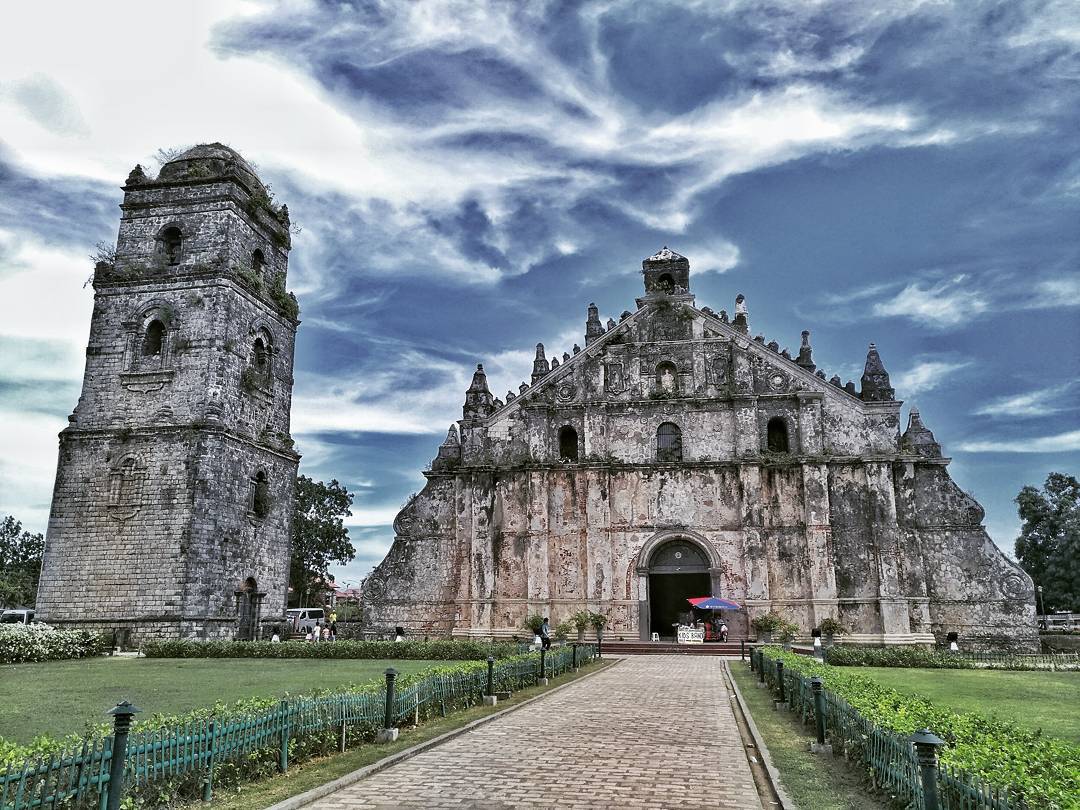
The Saint Augustine Church (Spanish: Iglesia de San Agustin de Paoay), commonly known as the Paoay Church, is a Roman Catholic church in the Municipality of Paoay, Ilocos Norte in the Philippines. Completed in 1710, the church is famous for its distinct architecture highlighted by the enormous buttresses on the sides and back of the building. It is declared as a National Cultural Treasure by the Philippine government in 1973 and a UNESCO World Heritage Site under the collective group of Baroque Churches of the Philippines in 1993.
The earliest historical record of the area dates back to 1593, becoming an independent Augustinian parish in 1686. Building of the present church was started in 1694 by Augustinian friar Father Antonio Estavillo, completed in 1710 and rededicated in 1896. Some portions of the church was damaged in the 1865 and 1885 earthquakes but was later restored under the initiative of former First Lady Imelda Marcos.
With it’s gothic, oriental and baroque architecture, Paoay Church (aka San Agustin Church) is considered of the oldest and most beautiful churches in the country. It is also a UNESCO World Heritage Site and is a National Cultural Treasure. With its 24 carved buttresses, the church was able to withstand several natural calamities and continues to stand strong even after 300 years.
The residence was built by the Philippine Tourism Authority (PTA; now the Tourism Infrastructure and Enterprise Zone Authority or TIEZA) in 1977 for Marcos's 60th birthday, and served as an official residence for the president's family when they were staying in Ilocos Norte.
It is a two-story mansion overlooking the Paoay Lake, and consists of seven (supposedly a lucky number for Marcos) rooms, with each room having a theme of historical events from the Marcos era: Study, Agriculture, Diplomacy, OFW (overseas Filipino workers), Culture, Nation Building and Family.
While being administered by TIEZA, Cecile Licad played a Frédéric Chopin program at the property in 2001.
Usage of the property was turned over by the former president Benigno Aquino III to the Ilocos Norte provincial government in 2010. Governor Imee Marcos, Ferdinand Marcos's daughter, then had the property refurbished to be one of the province's tourist attractions. Eric Zerrudo, of the University of Santo Tomas Center for Conservation of Cultural Property and Environment in the Tropics, was commissioned to put together the exhibits in every room, with each room centering on a theme of Marcos's public programs.
The Sandiganbayan anti-graft court stripped the Marcoses of the property in 2014, after it voided a 1978 agreement between Marcos and the then PTA, deciding that since it is a national park, Marcos had no legal rights over it since national parks are "inalienable public domain",[3] despite claims by Bongbong Marcos, the son of the former president, that the property was owned by their family.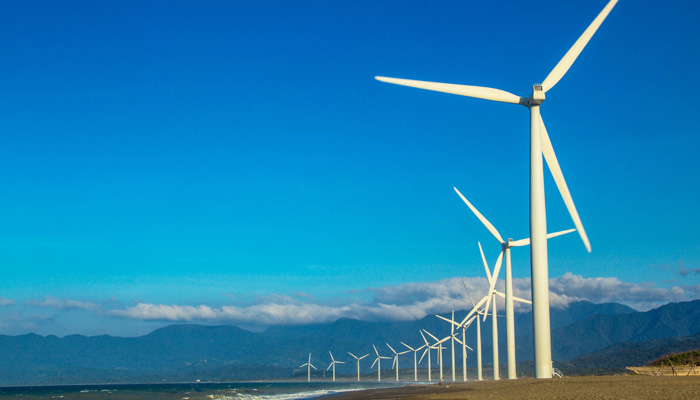
Bangui Wind Farm is a wind farm in Bangui, Ilocos Norte, Philippines. The wind farm uses 20 units of 70-metre (230 ft) high Vestas V82 1.65 MW wind turbines, arranged on a single row stretching along a nine-kilometer shoreline off Bangui Bay, facing the West Philippine Sea.
Phase I of the NorthWind power project in Bangui Bay consists of 15 wind turbines, each capable of producing electricity up to a maximum capacity of 1.65 MW, for a total of 24.75 MW. The 15 on-shore turbines are spaced 326 metres (1,070 ft) apart, each 70 metres (230 ft) high, with 41 metres (135 ft) long blades, with a rotor diameter of 82 metres (269 ft) and a wind swept area of 5,281 square metres (56,840 sq ft).
Phase II, was completed on August 2008, and added 5 more wind turbines with the same capacity, and brought the total capacity to 33 MW. All 20 turbines describes a graceful arc reflecting the shoreline of Bangui Bay, facing the West Philippine Sea.
The Northwind Bangui Bay Project is located at the municipality of Bangui, Ilocos Norte, Philippines. Located at the north-west tip of Luzon island, the wind turbines face the sea from where the wind blows towards the land. Its location along the shore is optimal in removing windbreaks and has a terrain roughness of 0. The site is free of any trees and vegetation, and stretches approximately 9 kilometres (5.6 mi) long and 100 metres (330 ft) wide. The area is undeveloped and uninhabited making it ideal as a site and poses no threat to the environment.
The location of the Philippines being near the Asia-Pacific monsoon belt is ideal for installing wind turbines. The Philippine Atmospheric, Geophysical and Astronomical Services Administration attests that the Philippines has a mean average of about 31 watts per square meter (W/m2) of wind power density.
The Ilocos Sand Dunes Stretches encompasses the towns of Currimao through to Pasuquin in Ilocos Norte. The La Paz Sand Dunes in Laoag City is one of the more popular sand dune destinations in Ilocos Norte. But more recently, the PAOAY SAND DUNES is remarkably gaining popularity to tourists travelling up north.
To start your Paoay Sand Dunes Adventure, hire a 4x4 Rough Riding vehicle at the base of the site. A fleet of these 4x4s are at your disposal and a professional driver will be your guide to the vast sand dunes. For 1,500php for a maximum of 5 people per car, the driver will tour the group at the Sand dunes for 30 minutes. Sightseeing and photo sessions can be done for this package.
For the more adventurous type, rent the 4x4 for an hour which will then include sand boarding and thrilling drops on steep sand ridges that will make you scream in excitement. Hold on to the steel bar while standing on the 4x4 for the most exciting adventure in Paoay. The sand ridges can go as high as 10-20ft at the most, while the most thrilling ride is the “rollercoaster”, where a series of sand hills will make you hold on to that bar of steel for dear life.
After these rides, try sand boarding where a plank of wood is your equipment to slide over sand folds in the vast landscape. It has the same discipline as skate boarding, such as balance is the key to the sport. My first try was, of course (with my inborn uncoordinated self), a fall but it was not painful at all. The soft sand is your cushion and your defense to the fear of trying again. If you do it once and get over the fear, I can assure that you'll do it over and over again. It was that much fun! The hardest and most tiring aspect of the sport? Going up again the sandy slope after sliding down, but this will not prevent you to try and try until you do it perfectly. This package will cost 2,500php.
After the thrill, the guide will then drive the group down to the beach shores along the sand dunes. It is a perfect way to end a beautiful and exhilarating adventure. Plan your trip either in the early morning to welcome the sunrise (open as early as 5am) or late afternoon (5-6pm) to glory on the sunset not only because it’s marvelous but also to avoid the heat of the afternoon sun that can reflect to the sand.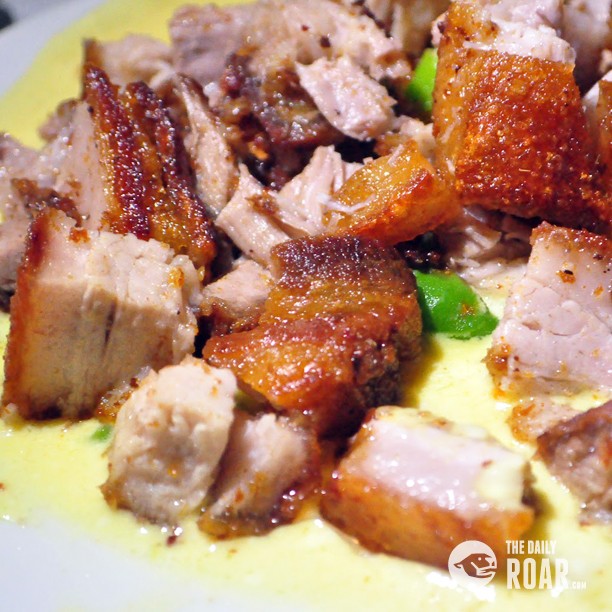
(locally known as chicharon or deep-fried pork meat)
This delicacy is actually one of the native food in Ilocos Norte, Philippines. Three biggest bagnet originators come from Laoag, Ilocos Norte and in nearby towns, San Nicolas and Batac.
Preparing Bagnet is a long process. Cuts from the pig meat are made into Bagnet. Pork cuts are placed in a "Sinublan" or "Silyasi" (a very large iron pot) to boil. The pork meat is then submerged in broiling oil until bubbles begin to appear on the skin surface while it hardens and begins to pop. For about 20 minutes after the meat has been taken out from the iron pot, the process is being repeated until the skin pops further. And the secret to the mouth-watering bagnet is in its crispy skin and crunchy meat.
When kept inside a refrigerator, bagnet can last for more than a week before it gets spoiled. And if placed in room temperature, you can have repeat it as a dish for at least two or three days.
Bagnet's was first introduced in the maket back in the 1980s. But before producers began to notice its commercial value, bagnet-making started as a handed-down tradition of deep-frying the meat until crispy to extend its shelf life for a few more days.
As of Now, the Deparment of Trade and Industry has seen the inflation of bagnet production in Ilocos Norte to a multi-million-peso business from its humble beginning as a means to preserve leftover meat.
Another delicacy from the Ilocos Norte province would be the empanada, the orang coating is made from Mochiko Rice flour and orange food coloring. And there are different types of Empanada, the ordinary and the special empanada, the difference are the fillings. Ordinary empanada only have the grated unripe green papaya, sauteed mung beans, garlic and egg, while the special has "Longanisa" (sausage) added besides the fillings from the ordinary empanada.
Preparing the Empanada is simple, for the coating, mix ingredients in a bowl and knead dough lightly. Then take about two to three tablespoon of dough and flatten with a rolling pin. Then spread the fillings starting with the mung the grated green papaya then mung beans then “Longanisa” and the egg. Seal the sides and deep fry in the preheated deep fryer.
For this Municipality of Batac, one of the municipality in Ilocos Norte celebrates the EMPANADA FESTIVAL every 23rd of June, to better promote their most famous product. The main feature of the festival are the Float and Street Dance Parade which explicate the process of preparing the the empanada. Another features of the festival is the contests on the preparation, cooking and eating the empanada. |
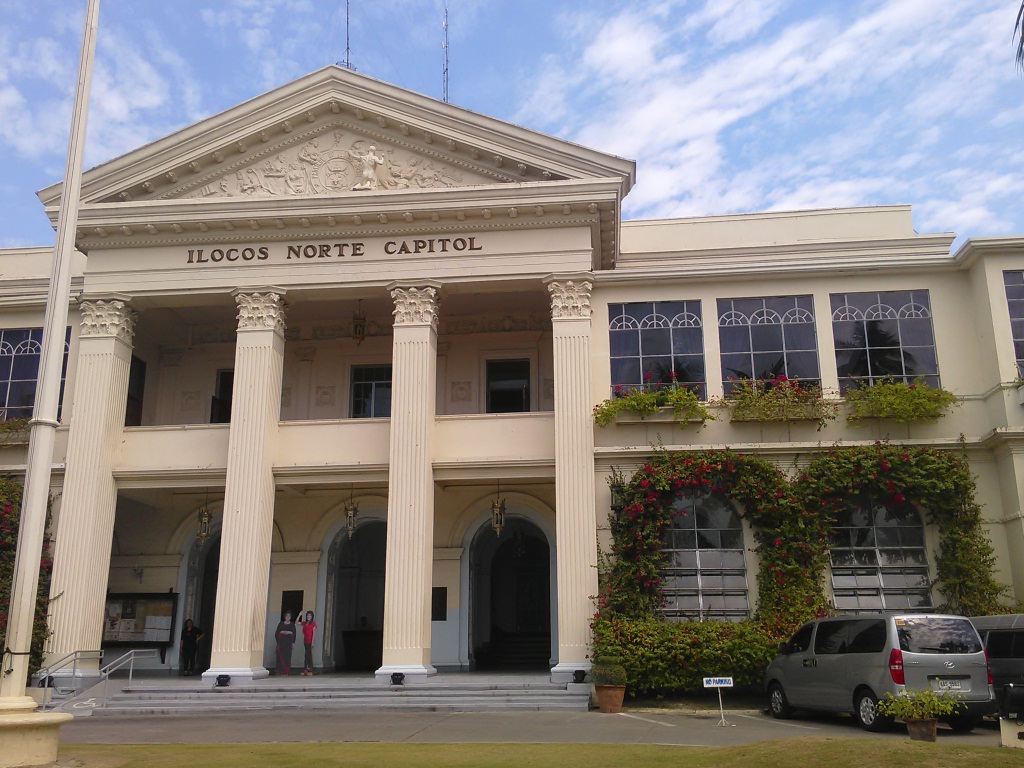 |
 |
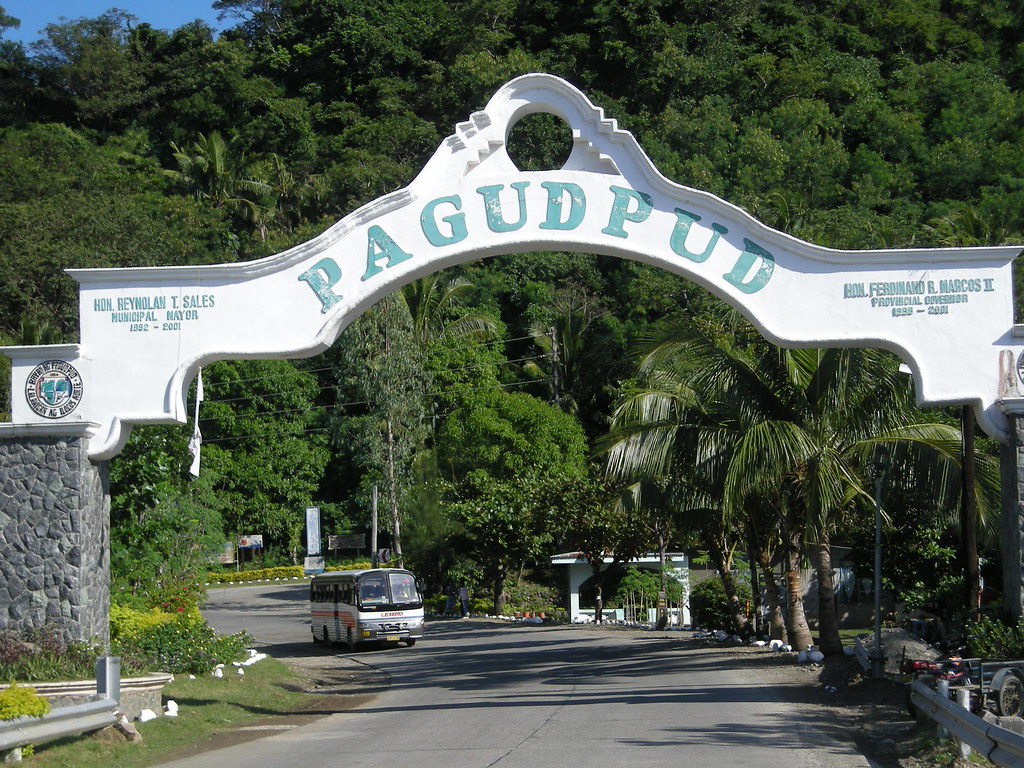 |
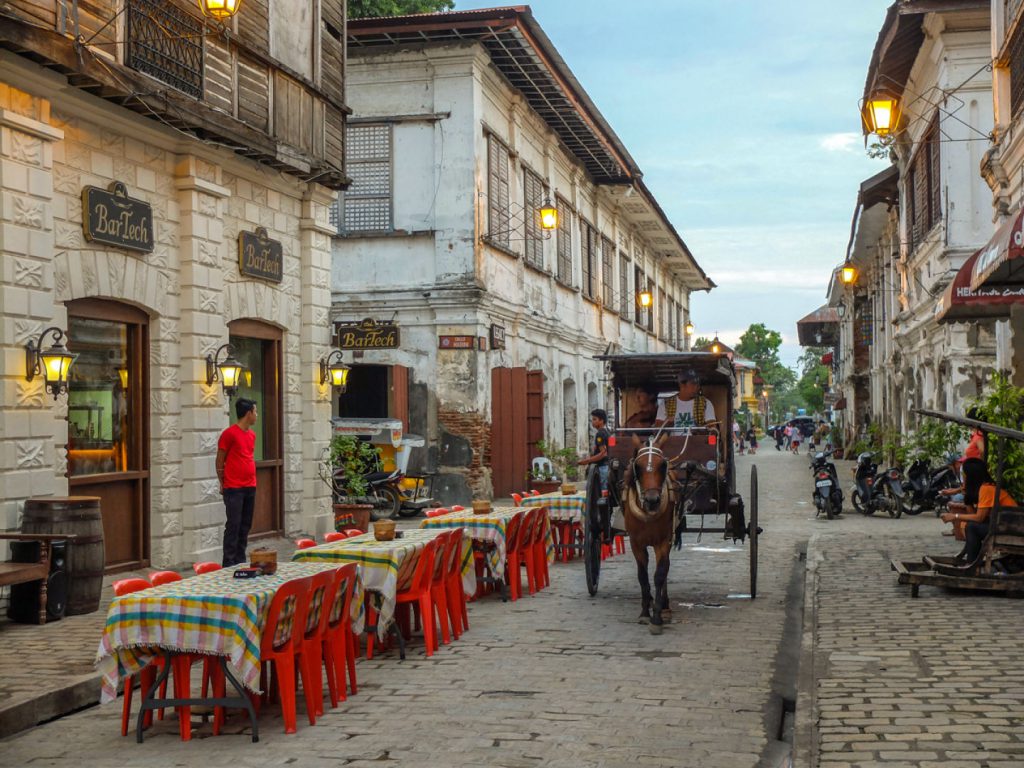 |
 |
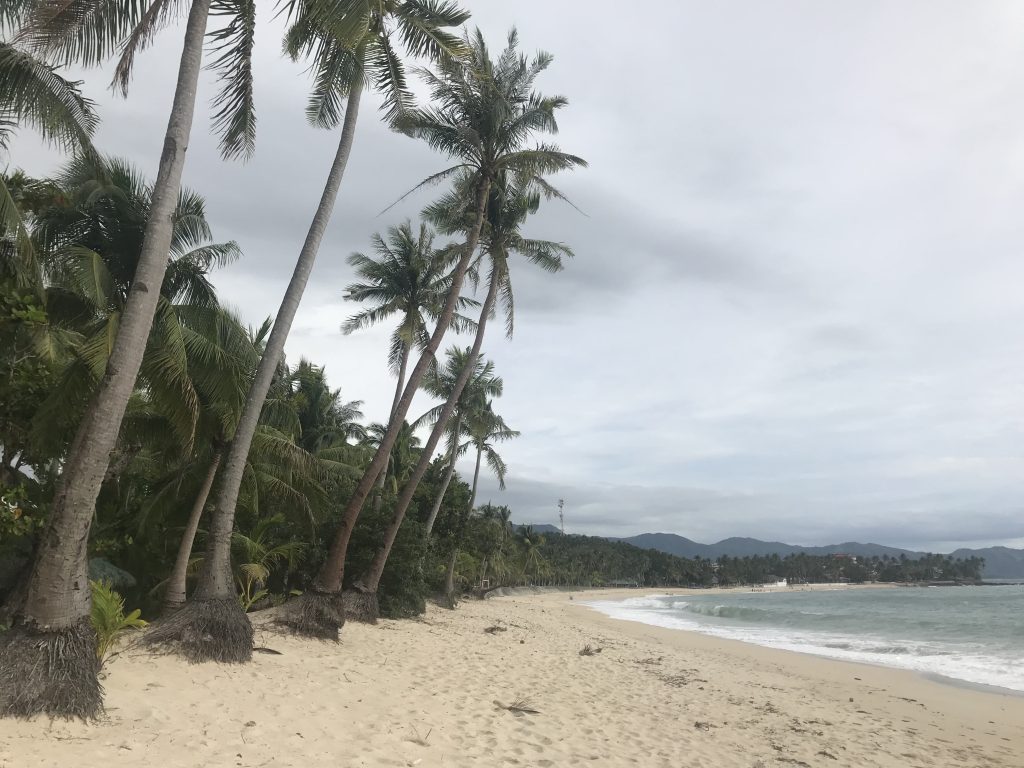 |
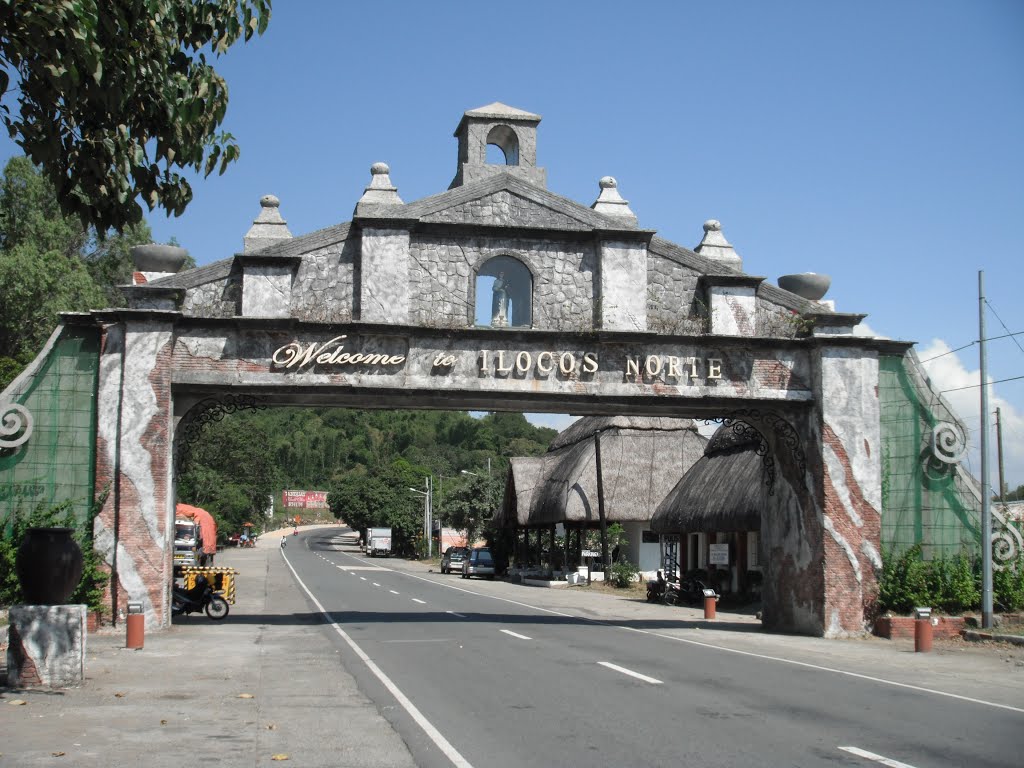 |